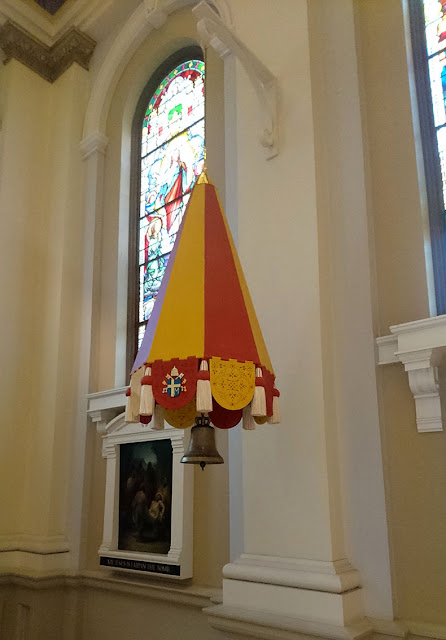This brief history aside, it is easy to slip into thinking where we consider such items no longer obtainable. This is in great part because we tend to think of liturgical art in a predominantly "catalogue goods" sort of way. It is true that you won't find items such as these in your local religious goods supplier's catalogue, but where you can find them is within the portfolios of our liturgical artists.
Today's examples comes from the studios of Mussner G. Vincenzo Ars Sacra, located in beautiful northern Italy -- Ortisei specifically; a firm that will be familiar to many of our readers as we have featured a history of their firm.
Let's take a closer look at their work.
 |
| Tintinnabulum of the Basilica of Our Lady, Vigianno, Italy. |
 |
| Umbraculum for the Basilica of San Jose, California |
 |
| Tintinanabulum designed for the basilica of St. Mary, Alexandria, Virginia |
 |
| Tintinanabulum designed for the basilica of St. Mary, Alexandria, Virginia |
Truly works worthy of the dignity of a basilica -- and once again a reminder of how important it is to look beyond the catalogues and to our liturgical artists.
For more information, please visit Mussner G. Vincenzo Ars Sacra on their website or on social media.











